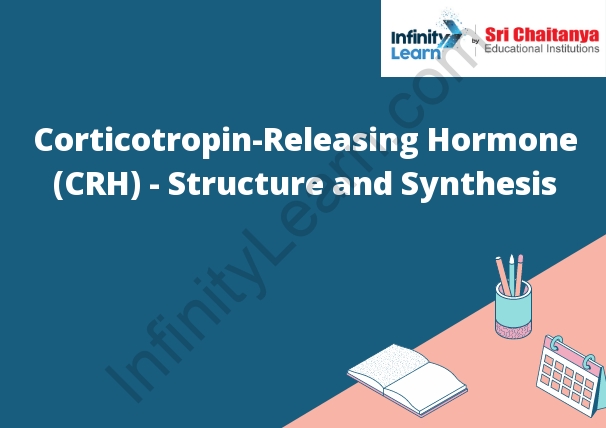Table of Contents
Introduction to Corticotropin-Releasing Hormone Importance of CRH Hormone
Corticotropin-releasing hormone (CRH) is a peptide hormone that is produced in the hypothalamus. CRH is responsible for the release of adrenocorticotropic hormone (ACTH) from the pituitary gland. ACTH is responsible for the release of cortisol from the adrenal gland. Cortisol is a hormone that is responsible for the body’s response to stress. CRH is also responsible for the regulation of the body’s immune system. Corticotropin-Releasing Hormone (CRH) – Structure and Synthesis.

CRH Hormone Structure
The CRH hormone is a peptide hormone that is produced by the hypothalamus in the brain. It is responsible for the release of adrenocorticotropic hormone (ACTH) from the pituitary gland, which in turn stimulates the release of cortisol from the adrenal glands. The CRH hormone is also involved in the stress response, helping to increase blood pressure and heart rate, and to increase the availability of glucose.
CRH Hormone Synthesis
The hypothalamus secretes a hormone called CRH (corticotropin-releasing hormone), which signals the pituitary gland to secrete ACTH (adrenocorticotropic hormone). ACTH signals the adrenal glands to secrete cortisol. Cortisol signals the release of more CRH from the hypothalamus, which starts the cycle over again.
How is a Corticotropin-Releasing Hormone Controlled?
Corticotropin-releasing hormone (CRH) is a hormone that is released from the hypothalamus. The hypothalamus is a part of the brain that controls the release of many hormones. CRH is released in response to stress or other stimuli. CRH then travels to the pituitary gland, where it stimulates the release of ACTH. ACTH is a hormone that stimulates the release of cortisol from the adrenal glands. Cortisol is a hormone that helps the body respond to stress.
What Happens if I Have Too Much Corticotropin-Releasing Hormone?
Too much corticotropin-releasing hormone (CRH) can cause a number of problems, including Cushing’s syndrome. Cushing’s syndrome is a disorder that results from too much cortisol in the body. Symptoms of Cushing’s syndrome include weight gain, a round face, thinning hair, and a high blood sugar level.
What Happens if I Have Too Little Corticotropin-Releasing Hormone?
Corticotropin-releasing hormone (CRH) is a hormone that is produced in the hypothalamus. It stimulates the pituitary gland to release adrenocorticotropic hormone (ACTH), which in turn stimulates the adrenal glands to release cortisol.
If you have too little CRH, you may have a decreased response to stress, and you may be more susceptible to anxiety and depression. You may also have a decreased ability to fight infection, and you may be more likely to experience weight gain.
Role in Parturition
The hormones prolactin and oxytocin play a role in parturition. Prolactin is produced by the pituitary gland and stimulates the production of milk in the breasts. Oxytocin is produced by the pituitary gland and stimulates the contraction of the muscles of the uterus. The combination of prolactin and oxytocin stimulate the uterus to contract and push the baby out.
Corticotropin-Releasing Hormone (CRH) – Structure and Synthesis.








